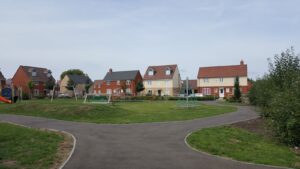‘Pls RT’ – will social media increase participation?
The civil and democratic activities available to us online is impressive; from signing a petition, or joining a Facebook group, to volunteering remotely through our computers – or simply reading a community website. This list is growing by the week.
Yet this doesn’t seem to have led to any higher levels of traditional civic or democratic engagement. During the 2010 General Election, only 6% of internet users chose to follow/fan political parties or candidates for office on Twitter and Facebook, and most people who engaged with the election online did so through mainstream media outlets.
The 2009 Oxford Internet Survey showed that over the course of the previous year only 21% of internet users had actually undertaken any online civic activities. A similar picture emerges from across the pond; in 2009, 20% of American adults used digital tools to keep informed about community issues and talk to their neighbours.
There are more statistics out there along these lines, and the numbers are in the same ballpark as offline participation levels. Yet I don’t think this should be seen as a failure for social media – in fact our experience shows that social media has helped strengthen the bonds between existing community activists, whilst providing a very public forum for their activity.
Over the past two years, as part of our Local 2.0 project, the Young Foundation has been exploring how social media can help to empower communities. As the project in its current guise comes to an end we’re keen to share our learning – some of which revolves around the use of social media to see more people actively engaged in civil and democratic activity.
We’ve found that social media in itself will not activate the latent capacity to participate that surveys tell us exist. The technology might have made it easier for most us to participate, but it is not enough.
There are lots of reasons why this is the case. Our democratic systems and public services do not yet cater for the continuous, citizen led engagement that social media necessitates.
But even as this changes, online civil and democratic participation is going to have to compete with an almost infinite world of knowledge, entertainment and socialising. Migrating methods of offline participation into the online world puts it in a fiercely competitive environment for our attention. And let’s face it, when faced with shopping for bargains, reading celebrity news or spurious football gossip – signing an e-petition or checking out your local council’s Facebook page isn’t quite so tempting.
We need to re-evaluate the goals for online civil and democratic participation. If the main goal is to involve more people, it needs to be much savvier. It needs to tap into the feelings that truly resonate; happiness, sadness, anger or humour. And it needs to do this whilst informing us about how we can change things – what we can practically do to make a difference.
This is where our work is now moving. Through our new Building Local Activism programme, funded by the Big Lottery Fund, we will be supporting local communities to embed technology at the heart of local campaigning and lobbying – helping them to push for change locally, whilst learning lessons that to be shared across the country.
















(I’ve just posted this over at the Linkedin Group):
Most emerging evidence seems to indicate that it is the combination and complimentary use of electronic media and ‘in the flesh’ person-to-person contact that is a powerful producer of exchange, learning, innovation and mutual support.
I’m currently doing work around the inter-face between online and offline ‘real world’ engagement in the regeneration field. The current work under way with the RSA’s ‘Connected Communities’ is a revealing and promising avenue of research. The outcomes of the RSA programme so far seem to demonstrate that it is the combination of online and offline that can be a significant benefit to communities of neighbourhood and interest.
A probably much forgotten concept that has been called Jevon’s Complementary Corollary is maybe relevant here. In the midst of the Industrial Revolution in Great Britain, an economist called Jason demonstrated that that increased efficiencies can lead to an increase, rather than a decrease, in the use of something. (Improvements to coal-fired steam engines by the Scottish inventor James Watt were the subject of Jevon’s researches).
That corollary seems to be what has applied to social media. As it has become more and more accessible, useable and efficient, it is being used more and more. As with the telephone, so with social media we are finding that the more efficient it becomes, the more and more people use it.
But, a paradox is that person-to-person ‘in the flesh’ exchange still beats electronic media hands-down. Experiments at Michigan University USA a few years ago used game-play to demonstrate how a group with person-to-person contact only, performed significantly better than a group with electronic access only.
That paradox is resolved in the private sector ‘knowledge and creative economy’ sectors by the players making very intensive and complementary use of both online and offline networking and engagement.
I wonder if the focus of much policy and practice in the UK around communities and online media needs to be recalibrated. This could entail of lessening of the singular concentration on ‘resolving’ what is perceived as the digital divide. Instead there could be more of a recognition of the need for horses for courses; that sometimes it’s about raising online communicating capacity and sometimes it’s about ‘real-world’ meeting and networking and learning together – but above all it’s about ensuring that the two are worked in combination and in complementary ways.
Hi Edward,
Do you think that social media will be able to entice people into ‘real world’ meetings, networks etc.. when lots of other mediums fail to do so?
For lots of agencies, groups and residents we come across this seems to be the biggest driver for using social media.
Mandeep.
Mandeep I agree that the perception of social media as ‘the solution’ to engagement with audiences is the main driver. It is also, however, in my opinion the area of greatest fallacy and failure. If an organisation does not succeed in the first place to engage with its audiences, social media will most likely prove to be a costly (but beguiling) distraction. The appropriateness, effectiveness and operational feasibility of social media has to be covered by a strategic review and marketing communications plan prior to any commitment. We have, of course, been here before – look at all those expensive, boring, static and out-dated corporate websites that were to ‘enhance the organisation’s ‘image’ and communication with audiences.